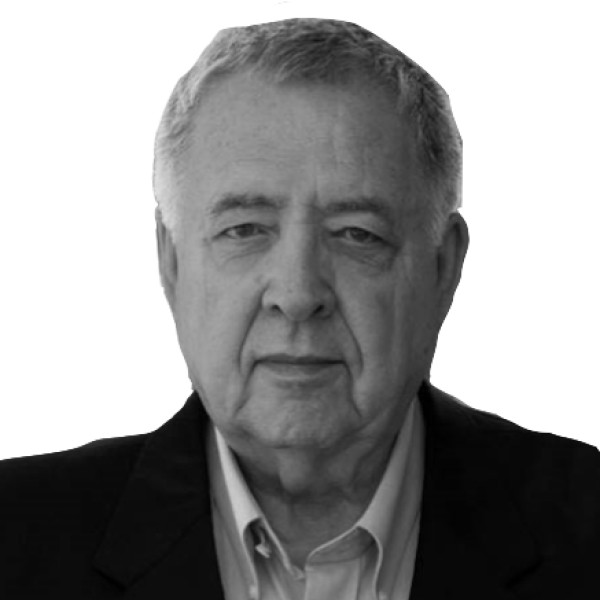The research of the group involves studies of natural and artificial photosynthesis. The goal of the research is a more complete understanding of the beginning of the process of natural photosynthesis such that artificial photosynthesis can be a reality. The mechanism and structural requirements of photosynthesis are explored via a series of photosynthetic proteins altered by sitedirected mutagenesis and by model compounds. The work involves the following areas:
(1) Time domain x-ray diffraction.
Single crystals of the reaction-center protein from Blastochloris viridis were analyzed by monochromatic and Laue diffraction, in the dark and 3 ms after illuminating the crystal with a pulsed laser. Refinement shows that ubiquinone binds only in the "proximal" QB binding site and that no significant quinone motion occurs during initial electron flow.
(2) Charge migration in photosynthetic arrays.
Upon chemical oxidation, light harvesting complex 1 (LH1) of photosynthetic bacteria behave like molecular wires. Experimentally, charge migration within an oxidized LH1 array is monitored by following the temperature dependent changes of the electron paramagnetic resonance (EPR) line shape of oxidized bacteriochlorophyll free radicals contained in the LH1 complex. At temperatures below 10 K charge transport is very slow while at higher temperatures, rapid charge migration occurs, resulting in large changes in the EPR line shape. The temperature dependence of the EPR spectra could be described only by taking into account the glass like behavior of the protein medium, consistent with the view that the protein behaves as a frozen glass "solvent" for charge migration, even at room temperature. The glassÐlike nature of proteins shows that considerable heterogeneity exists for electron transfer in LH1, a novel molecular wire. Future experiments in our lab are intended to provide a better understanding of heterogeneity and thus aid the development of solvated Ómolecular wiresÒ that function in the solid state.
(3) Photoinduced charge separation explored by chemically induced dynamic electron polarization (CIDEP).
A novel combination of nanosecond pulsed EPR spectroscopy and CIDEP has been developed to quantify the distance dependence of electron transfer in liquid solventÐseparated radical ion pairs composed of quinone anions and several cation radicals. Using a superexchange mechanism mediated by the intervening solvent molecules, a simple three-dimensional model of the Marcus matrix element that characterizes the rate electron transfer as a function of distance has been developed. This model explains the distance dependence of electron transfer including data previously reported on the charge transfer reactions both in liquid and frozen (77 K) solutions. Currently we are extending the electron transfer parameters of covalently linked triads that perform efficient photoinduced charge separation.
Additional Interests
- growth of photosynthetic organisms
- biochemical investigation of photosynthesis
- the physical chemistry of natural photosynthesis
- the spectroscopy of photoinduced electron-transfer reactions, both optical and electron paramagnetic resonance
- the growth of integral membrane protein single crystals
- x-ray crystallography including protein crystallography
- EXAFS spectroscopy of model systems and proteins
- linear prediction methods of spectral analysis
University of North Carolina
B.S.
1963
Washington University
Ph.D.
1968
Argonne National Laboratory
1995
The University of Chicago
Professor
Present
Superexchange Electron Tunneling Mediated by Solvent Molecules: Pulsed Electron Paramagnetic Resonance Study on Electronic Coupling in Solvent-Separated Radical Ion Pairs. J. Phys. Chem. B, 108, 10226 (2004).
Time-resolved crystallographic studies of lightinduced structural changes in the photosynthetic reaction center. P.N.A.S., 101(16), 5982 (2004).
Exploring charge migration in light-harvesting complexes using electron paramagnetic resonance line narrowing. J. Phys. Chem. B, 107(9), 2127 (2003).
Characterization of expressed pigmented core light harvesting complex (LH 1) in a reaction center deficient mutant of Blastochloris viridis. Photosynthesis Research, 77(1), 53 (2003).
Contribution of colliding parallel electron spins to electron paramagnetic resonance spectral narrowing. J. Chem. Phys., 118, 5582 (2003).
Exploring complex CIDEP of pbenzosemiquinones with time resolved CW-EPR. Molecular Physics, 100(9), 1323 (2002).
Fellow, American Academy of Arts and Sciences
Spin Chemistry Lifetime Achievement Award
2024
Zavoisky Award, Russian Academy of Science
1994
Alexander von Humboldt Research Award for Senior US Scientists
1992
Rumford Premium, American Academy of Arts and Sciences
1992
Fellowship, The Institute for Advanced Studies, The Hebrew University of Jerusalem
1990 - 1991
Ernest Orlando Lawrence Memorial Award
1990
R&D 100 Award
1988
Argonne National Laboratory Director's Annual Award
1986
Argonne Pacesetter Award
1986
University of Chicago Award for Distinguished Performance
1977
